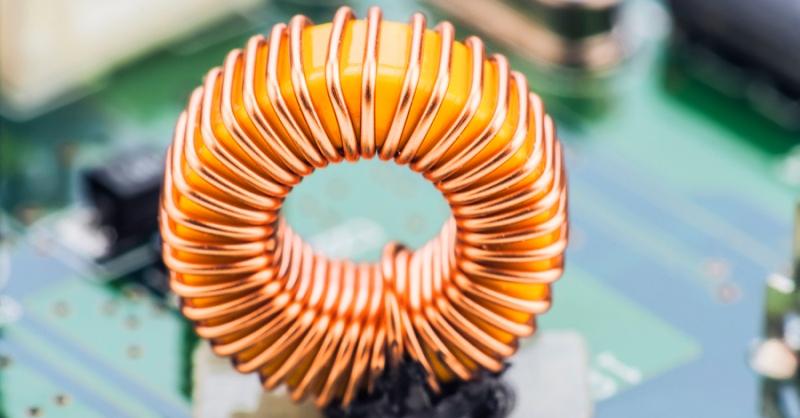In the vast realm of electromagnetism, there’s a phenomenon that sparks curiosity and captivates the minds of physicists, engineers, and enthusiasts alike: induction. At the heart of this phenomenon lies a crucial device known as the induction coil. But what exactly is induced in coil, and why is it significant? Join me on this journey as we delve into the intricacies of induction coils, uncovering their meaning, mechanisms, and myriad applications.
Understanding Induction Coils
Let’s begin with the basics. An induction coil is a simple yet powerful device that harnesses the principles of electromagnetic induction. But what is electromagnetic induction? In essence, it refers to the process wherein a changing magnetic field induces an electromotive force (EMF) or voltage in a nearby conductor. This fundamental concept, elucidated by Michael Faraday in the 19th century, forms the backbone of numerous electrical devices and technologies, with the induction coil being one of the prime examples.
What is an Induction Coil?
An induction coil typically consists of two coils of wire wound around a common core, often made of iron or other ferromagnetic materials. These coils are referred to as the primary and secondary coils. The primary coil is connected to an alternating current (AC) power source, while the secondary coil is where the induced voltage is collected. When an alternating current flows through the primary coil, it generates a changing magnetic field around the core. This fluctuating magnetic field, in turn, induces a voltage in the secondary coil through electromagnetic induction.
The Meaning of Induced in Coil
Now, let’s delve deeper into the meaning of “induced in coil.” The term “induced” refers to the process by which a voltage is generated in the secondary coil of the induction coil. This voltage is a result of the magnetic flux linking the coils and the rate of change of this flux. According to Faraday’s law of electromagnetic induction, the induced voltage (‘V) in a coil is directly proportional to the rate of change of magnetic flux (ΦΦ) linking the coil and is given by the equation:
Where:
- V is the induced voltage.
- N is the number of turns in the coil.
represents the rate of change of magnetic flux.
This equation illustrates how the induced voltage in the coil depends on factors such as the number of turns in the coil and the rate at which the magnetic flux changes. Understanding this relationship is crucial for designing and analyzing the performance of induction coils in various applications.
Mechanism of Induction Coils
To grasp the mechanism of induction coils better, let’s explore a simplified example. Imagine a scenario where the primary coil is connected to an AC power source, causing an alternating current to flow through it. As the current alternates, it produces a fluctuating magnetic field around the core. According to Faraday’s law, this changing magnetic field induces a voltage in the secondary coil. The induced voltage in the secondary coil can be harnessed to power electrical devices, create sparks, or even generate high voltages for applications such as inductive heating or medical devices.
Applications of Induction Coils
Induction coils find a plethora of applications across various fields due to their versatility and efficiency. Here are some notable examples:
- Spark Ignition Systems: In automotive engines, induction coils are utilized in spark ignition systems to generate high-voltage sparks at precise intervals, igniting the air-fuel mixture in the combustion chambers.
- Induction Heating: Industries employ induction coils to heat metallic objects rapidly and efficiently. By inducing currents in the conductive material, induction heating can achieve high temperatures quickly, making it ideal for processes such as brazing, soldering, and annealing.
- Wireless Power Transfer: The principle of electromagnetic induction underpins wireless power transfer systems, where energy is transmitted between coils without the need for physical contact. This technology is used in wireless charging pads for smartphones, electric toothbrushes, and electric vehicles.
- Medical Devices: Induction coils play a crucial role in various medical devices, including magnetic resonance imaging (MRI) machines and defibrillators. In MRI machines, powerful induction coils generate the magnetic fields necessary for imaging internal body structures with exceptional clarity.
- Communication Systems: Induction coils are integral components of communication systems, such as radio frequency identification (RFID) readers and wireless communication devices. They facilitate the transmission and reception of electromagnetic signals, enabling wireless data transfer and identification.
Conclusion
In conclusion, the meaning of “induced in coil” encapsulates the fascinating process of electromagnetic induction, wherein a changing magnetic field generates a voltage in a nearby coil. Induction coils harness this phenomenon to power countless devices and technologies, ranging from automobile spark ignition systems to advanced medical imaging equipment. Understanding the principles behind induction coils not only enriches our knowledge of electromagnetism but also paves the way for innovative applications that shape our modern world. As we continue to explore the frontiers of science and technology, induction coils will undoubtedly remain indispensable tools in our quest for progress and innovation.
